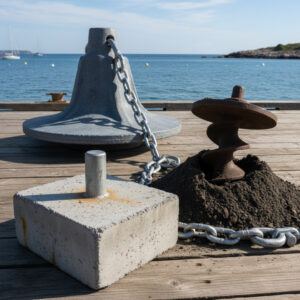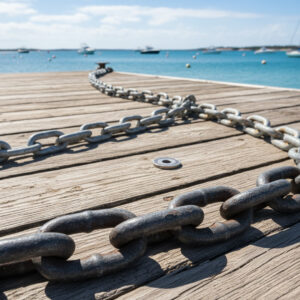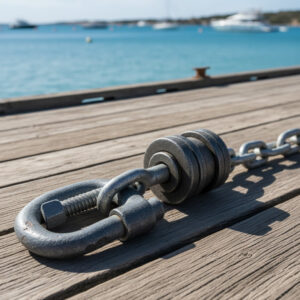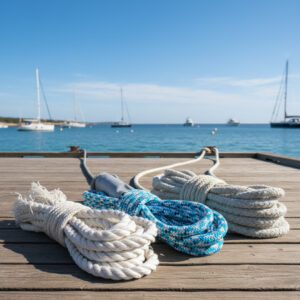Mooring Requirements Explained: Everything You Need to Know Before Anchoring Your Vessel
When it comes to marine safety and vessel security, understanding mooring requirements is crucial. The right mooring system not only keeps your boat safely in place but also ensures compliance with maritime standards and environmental regulations. Whether you operate a small leisure craft or a commercial vessel, knowing the correct mooring equipment specifications and uses will help you make the right choice for performance and safety.
What Is Mooring and Why It Matters
Mooring refers to securing a vessel to a fixed point, such as a buoy, dock, or anchor system, to prevent drifting. A well-designed mooring setup ensures stability during wind, tide, and current changes. Poorly chosen or maintained moorings can lead to vessel damage, equipment failure, or safety hazards.
Modern mooring systems are engineered with specific load capacities, material grades, and corrosion resistance levels to suit different environments from calm marinas to open coastal waters. Understanding these technical aspects helps you select the right setup for your needs.
Key Mooring Components and Specifications
To meet essential mooring requirements, each part of your system must match your vessel’s size, weight, and operating environment. Below are the most common components and their uses:
1. Anchors and Ground Tackle
The anchor is the foundation of your mooring. Common types include:
- Concrete Blocks: Ideal for permanent moorings in calm waters.
- Screw Anchors: Offer high holding power in sandy or muddy seabeds.
- Deadweight Anchors: Used for larger vessels or deep-water installations.

When choosing, check for holding capacity ratings (in kN) and corrosion-resistant coatings, such as hot-dip galvanization.
2. Mooring Chains
Mooring chains connect the anchor to the buoy or riser line. High-quality chains are made from marine-grade steel (Grade 30–80) and should be tested for tensile strength and fatigue resistance.
- Use short-link chains for heavy loads and long-link chains for flexibility in tidal areas.
- Regularly inspect for rust, wear, and link deformation.

3. Shackles and Swivels
These fittings provide flexibility and prevent twisting of the mooring line. Choose forged alloy steel components that meet ISO 2415 or ASTM A952 standards. Always match the shackle’s working load limit (WLL) to the chain’s capacity.

4. Mooring Buoys and Floats
Mooring buoys provide visibility and keep lines afloat. Mooring buoys are made from UV-resistant, marine-grade polyethylene with high-impact resistance. Available in multiple buoyancy ratings, they are ideal for small boats, yachts, and commercial vessels alike.

5. Mooring Ropes and Lines
For flexible mooring setups, nylon and polyester ropes are commonly used for their elasticity and abrasion resistance. For heavy-duty applications, HMPE (High Modulus Polyethylene) ropes offer exceptional strength with reduced weight.

Installation and Maintenance Guidelines
Meeting mooring requirements isn’t just about choosing the right products it’s also about proper installation and maintenance.
- Positioning: Install moorings in areas with stable seabeds and adequate depth.
- Inspections: Conduct annual or semi-annual checks for chain wear, shackle corrosion, and rope degradation.
- Cleaning: Remove marine growth that may weaken components.
- Replacement: Follow manufacturer guidelines for part lifespan and replacement intervals.
Dockstop offers turnkey mooring systems designed for both recreational and commercial use, ensuring compliance with local maritime authorities and international safety standards.
Applications of Mooring Systems
Mooring products are designed for:
- Marinas and harbors: Reliable mooring for yachts, sailboats, and personal watercraft.
- Commercial vessels: Heavy-duty setups for barges, tugs, and workboats.
- Private moorings: Easy-to-install systems for waterfront property owners.
- Environmental zones: Eco-friendly moorings that protect seabeds and marine life.
Every Dockstop product is tested for load-bearing strength, UV resistance, and long-term durability, making them suitable for a wide range of marine conditions.
Final Thoughts
Understanding mooring requirements ensures you choose the right equipment for safety, durability, and compliance. From anchors and chains to buoys and ropes, every component plays a vital role in securing your vessel.
For high-quality, tested, and compliant mooring solutions, Dockstop provides a full range of marine-grade products engineered to meet international mooring requirements. Whether you’re outfitting a marina or securing your private vessel, Dockstop delivers the reliability and performance you can trust keeping your boat safe, secure, and ready for every voyage.
